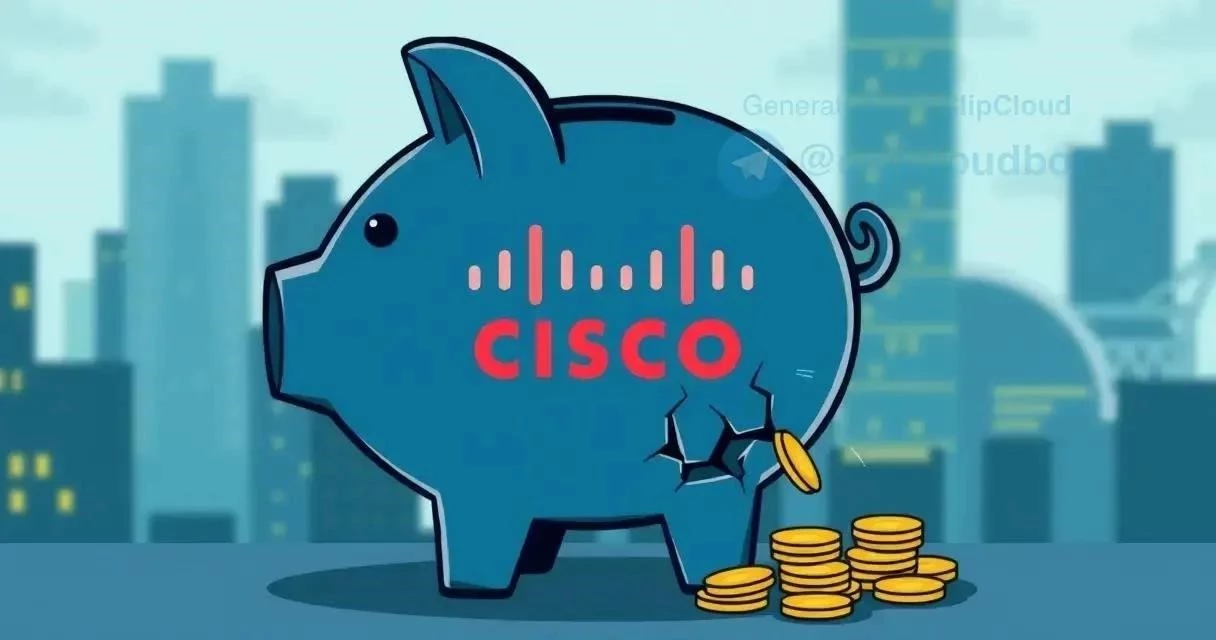Cisco Systems, a global technology leader, has consistently engaged in stock buybacks as a means of returning capital to shareholders. While buybacks can boost earnings per share and signal confidence in the company’s future, a more prudent approach is warranted given the dynamic nature of the technology industry and the potential need for strategic investments. This article explores the rationale behind Cisco’s buyback strategy and argues for a more balanced allocation of capital, prioritizing innovation and long-term growth over short-term stock price appreciation. Ultimately, a measured approach to buybacks will better position Cisco for sustained success in the competitive tech landscape.
Understanding Cisco’s Stock Buyback Programs
Stock buybacks, also known as share repurchases, involve a company using its cash reserves to buy back its own shares from the open market. This reduces the number of outstanding shares, which can increase earnings per share (EPS) and potentially drive up the stock price. Cisco has historically been a significant player in the buyback arena, allocating substantial capital to repurchase its shares.
- Purpose of Buybacks: To return capital to shareholders.
- Impact on EPS: Reduces the number of outstanding shares, potentially increasing EPS.
- Market Signal: Can signal confidence in the company’s financial health and future prospects.
The Case for Prudence in Cisco’s Buyback Strategy
While buybacks offer certain benefits, a more cautious approach is advisable for Cisco. The technology sector is characterized by rapid innovation and disruption. Companies must continually invest in research and development (R&D), acquisitions, and strategic partnerships to remain competitive. Overly aggressive buybacks can deplete cash reserves that could be better used for these critical investments.
Factoid: The technology industry is known for its “innovate or die” mentality. Companies that fail to adapt to changing market conditions risk becoming obsolete.
Prioritizing Innovation and Strategic Investments
Cisco should prioritize investments in emerging technologies such as artificial intelligence (AI), cybersecurity, and cloud computing. These areas represent significant growth opportunities, and Cisco needs to maintain a leading edge to capture market share. Acquisitions of promising startups can also be a valuable way to acquire new technologies and talent.
A balanced approach to capital allocation would involve a combination of:
- R&D Spending: Investing in internal research and development to create new products and services.
- Strategic Acquisitions: Acquiring companies with complementary technologies or market positions.
- Dividend Payments: Providing a steady stream of income to shareholders;
- Measured Buybacks: Using buybacks strategically to manage capital and support the stock price, but not at the expense of long-term growth.
The Risks of Excessive Buybacks for Cisco
Excessive buybacks can expose Cisco to several risks. First, they can reduce the company’s financial flexibility, making it more difficult to respond to unexpected challenges or opportunities. Second, they can divert resources away from critical investments in innovation and growth. Third, they can create the perception that management is prioritizing short-term stock price gains over long-term value creation.
Maintaining Financial Flexibility and Long-Term Value
Cisco needs to maintain a strong balance sheet to weather economic downturns and capitalize on strategic opportunities. A healthy cash reserve provides a buffer against unexpected challenges and allows the company to make opportunistic acquisitions. By prioritizing long-term value creation over short-term stock price appreciation, Cisco can build a more sustainable and resilient business.
FAQ: Cisco’s Buyback Strategy
- What is a stock buyback?
A stock buyback is when a company uses its cash to repurchase its own shares from the open market.
- Why do companies engage in buybacks?
Companies engage in buybacks to return capital to shareholders, increase earnings per share, and signal confidence in the company’s future.
- What are the risks of excessive buybacks?
Excessive buybacks can reduce financial flexibility, divert resources from critical investments, and create the perception that management is prioritizing short-term gains over long-term value.
- What should Cisco prioritize?
Cisco should prioritize a balanced approach to capital allocation, including investments in R&D, strategic acquisitions, dividend payments, and measured buybacks.
- Why is innovation important for Cisco?
The technology sector is characterized by rapid innovation and disruption. Cisco needs to continually invest in new technologies to remain competitive.
The Importance of Long-Term Vision
The decisions made today regarding capital allocation will have a profound impact on Cisco’s future. A long-term vision that prioritizes innovation, strategic partnerships, and a strong balance sheet is essential for navigating the challenges and opportunities that lie ahead. By embracing a more prudent approach to buybacks, Cisco can ensure that it has the resources necessary to remain a leader in the global technology market.
Analyzing Cisco’s Current Financial Position
To determine the appropriate level of buybacks, a thorough analysis of Cisco’s current financial position is crucial. This includes examining its cash flow, debt levels, and profitability. A healthy cash flow allows for more flexibility in capital allocation, while high debt levels may necessitate a more conservative approach. Furthermore, the company’s profitability provides insight into its ability to generate future cash flow and fund its various initiatives.
- Cash Flow Analysis: Assessing the company’s ability to generate cash from its operations.
- Debt Level Evaluation: Determining the company’s financial leverage and its ability to service its debt.
- Profitability Assessment: Evaluating the company’s ability to generate profits and its overall financial health.
Comparing Cisco’s Buyback Strategy to its Peers
Benchmarking Cisco’s buyback strategy against its peers in the technology industry can provide valuable insights. Comparing the percentage of revenue allocated to buybacks, R&D, and acquisitions can reveal whether Cisco is over- or under-investing in certain areas. This comparison should also consider the specific business models and growth strategies of each company.
Alternative Uses of Capital for Cisco
Beyond buybacks, Cisco has several alternative uses for its capital. These include increasing dividend payments, funding strategic acquisitions, investing in R&D, and reducing debt. Each of these options has its own advantages and disadvantages, and the optimal allocation of capital will depend on Cisco’s specific goals and priorities.
- Increased Dividend Payments: Providing a steady stream of income to shareholders.
- Strategic Acquisitions: Acquiring companies with complementary technologies or market positions.
- Investment in R&D: Developing new products and services to drive future growth.
- Debt Reduction: Strengthening the balance sheet and reducing financial risk.
The Role of Management in Capital Allocation Decisions
Ultimately, the responsibility for making capital allocation decisions rests with Cisco’s management team. These decisions should be based on a thorough analysis of the company’s financial position, the competitive landscape, and the long-term growth opportunities. Management should also be transparent with shareholders about its capital allocation strategy and the rationale behind its decisions.
Cisco’s stock buyback strategy should be viewed as one component of a broader capital allocation plan. While buybacks can be a valuable tool for returning capital to shareholders and signaling confidence in the company’s future, they should not come at the expense of critical investments in innovation and long-term growth. A more prudent approach to buybacks, combined with a focus on R&D, strategic acquisitions, and a strong balance sheet, will better position Cisco for sustained success in the dynamic technology industry. By prioritizing long-term value creation over short-term stock price appreciation, Cisco can ensure that it remains a leader in the global technology market for years to come.
The long-term health of Cisco depends on a balanced approach to capital allocation. Over-reliance on buybacks can create a false sense of security, masking underlying issues or hindering necessary investments; A more holistic perspective considers the needs of all stakeholders, including employees, customers, and the broader community.
Evaluating the Impact of Buybacks on Cisco’s Innovation
A key consideration when evaluating Cisco’s buyback strategy is its potential impact on innovation. The technology sector is characterized by rapid change, and companies that fail to innovate risk falling behind; Buybacks can divert resources away from R&D, potentially hindering the development of new products and services. It is crucial to assess whether Cisco’s buyback program is impacting its ability to compete in the long term.
- R&D Spending: Tracking the percentage of revenue allocated to research and development.
- Patent Activity: Monitoring the number and quality of patents filed by the company.
- New Product Launches: Assessing the frequency and success of new product introductions.
The Importance of Strategic Acquisitions for Cisco’s Growth
Strategic acquisitions can be a valuable tool for Cisco to expand its product portfolio, enter new markets, and acquire new technologies. However, acquisitions require significant capital, and excessive buybacks can limit the company’s ability to pursue these opportunities. A balanced approach to capital allocation should consider the potential benefits of strategic acquisitions and ensure that Cisco has the financial resources to execute them.
Addressing Shareholder Concerns About Cisco’s Buyback Strategy
While buybacks can be a way to return capital to shareholders, they are not always the most effective or efficient use of resources. Some shareholders may prefer that Cisco invest in growth opportunities or increase dividend payments. It is important for Cisco to communicate its capital allocation strategy clearly to shareholders and address any concerns they may have.
The Role of Corporate Governance in Capital Allocation Decisions
Strong corporate governance is essential for ensuring that capital allocation decisions are made in the best interests of all stakeholders. This includes having an independent board of directors that can provide oversight and challenge management’s decisions. It also includes having a transparent and accountable process for allocating capital.


